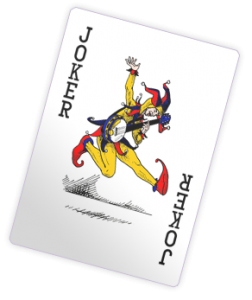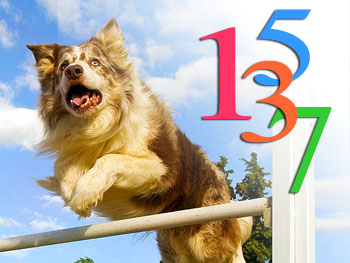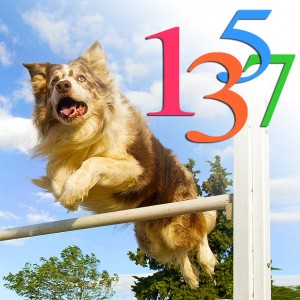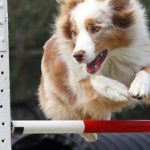USDAA Gamblers
What’s in a Game? That which we call Gamblers would be just as fun.
Games or non-standard runs can be really fun, but not if you don’t understand how they work. This unclear feeling when entering or running games can make some feel frustrated. In my effort to further my own understanding, I’ll try to help YOU understand them as well.
Even though I express frustration about ‘games’ I have to admit I do love Gamblers, mainly because I understand it. So I’m going to start there.
Here is the description from USDAA
“Gamblers is a point-basis class wherein handlers develop their own strategy for running a course in order to accumulate as many points as possible during the time allotted by the judge. Typically, in planning their run, any obstacle can be performed twice for points and the handler may choose what obstacles they wish to perform and in what order. The judge may impose restrictions on the sequences permissible (e.g., two different contact obstacles may be performed in sequence without first taking a non-contact obstacle) and may specify special challenges to earn bonus points (e.g., a short obstacle sequence where the handler is limited as to their movement or distance from the dog). Additionally, a judge may designate an additional time period during which a special challenge or “joker” (a.k.a., gamble) may be performed for bonus points. At the end of the allotted time, the competitor with the most points is the winner.”
USDAA Gamblers
First and foremost remember it’s a strategy game, it’s timed and points are earned. The beauty in it is that if you dog takes a wrong course, it’s no loss (for the portion you plan yourself). For example, If there’s a tunnel under the a-frame and your dog prefers one obstacle over another. You indicate (or not) for darling dog to take the tunnel but DD (darling dog) takes the A-frame correctly instead. You get the points for the a-frame. If you’ve set out to overachieve, like I typically do, your points should be fine.
 The Opening: The first portion of the course, that you plan yourself, is timed. You will run this portion (the opening) until you hear a buzzer ring. You will then go as quickly as you can to the “gamble”
The Opening: The first portion of the course, that you plan yourself, is timed. You will run this portion (the opening) until you hear a buzzer ring. You will then go as quickly as you can to the “gamble”
The Gamble: The second portion of the course is outlined with numbers. Interchangeably called the “Gamble” or “Joker”. For this portion, you have to stay behind a taped line placed on the ground while sending your dog through the numbered obstacles to complete the course. Be careful not to cross the line, even a little! Finish this part as fast as you can since it is timed as well.
Planning the opening: So while the same challenges of remembering your course and completing obstacles is the same as a standard course, you also have an added challenge of plotting your own path during the opening. This can be a big benefit to you since you can play to your dogs strengths. Unless an obstacle is in the closing part, you can avoid it if it causes your dog some difficulty.
The approach I like to take is to plan the course from the ‘joker’ backwards. Planning in reverse gives me an idea of the angle of approach and where I want to be on the course when the buzzer rings. Then I try to figure how many obstacles would be needed to fit within the time, and the most points I can get with the obstacles available along a fluid course. It’s important to also take into consideration my dog and the time they take to complete certain obstacles.
Strategy to fit your dog
For example, the last competition I entered Gamblers, I planned my course for Emma differently than I do for Bandit. Emma likes to stretch out and run. She’s also a bit anxious on the course, so if I become overly technical, staying in a small space, it can cause her to bog down. Bandit is slower, shorter and doesn’t like to run too far. For him I try to plan a course that redoes things and keeps to a smaller area. So, for him I plan 7-9 obstacles. For Emma, I typically plan 10-12. Be sure to count the Dog walk, A-frame, and Weave poles as two obstacles, since they take longer. For a while I avoided the weaves for both dogs because we were still working on training that and I knew it would take up all my time.
Below is a slideshow illustrating what my strategy might be for Emma and Bandit in two different Novice Gamblers runs. Thanks to Courtney Keys for allowing me to use her course maps.
[masterslider id=”11″]
What’s in the score?
Below is a slideshow showing examples of our scores for two Gamblers runs.
[masterslider id=”12″]
For further exciting reading, you can check out the USDAA rules and regulations regarding non-standard classes. https://www.usdaa.com/binary/files/Rules_ebook_2011_chp6.pdf
Also check out an informative 2015 article at USDAA: How to Plan a Successful Opening in Gamblers which includes some helpful equations on figuring the points requirements.
Next to work on: Snooker, My favorite (said with extreme sarcasm)! I hear people all the time say they love Snooker. There’s got to be something in that, I just haven’t found my groove yet. Writing out the rules for you may very well help me grasp the concept and find my Snooker joy!
Please, if you have something to question, add, or correct, don’t hesitate. I’m learning all the time. Email me




